Making the Most of Your Lemon, Lime, and Orange Peels
Seven years ago I read about how baked goods, pastas, and more can reach new flavor heights by simply adding zested citrus peel to the recipes. I was intrigued enough to listen, learn, and follow Rochelle Bilow’s advice (the author of this helpful BON APPETIT article).
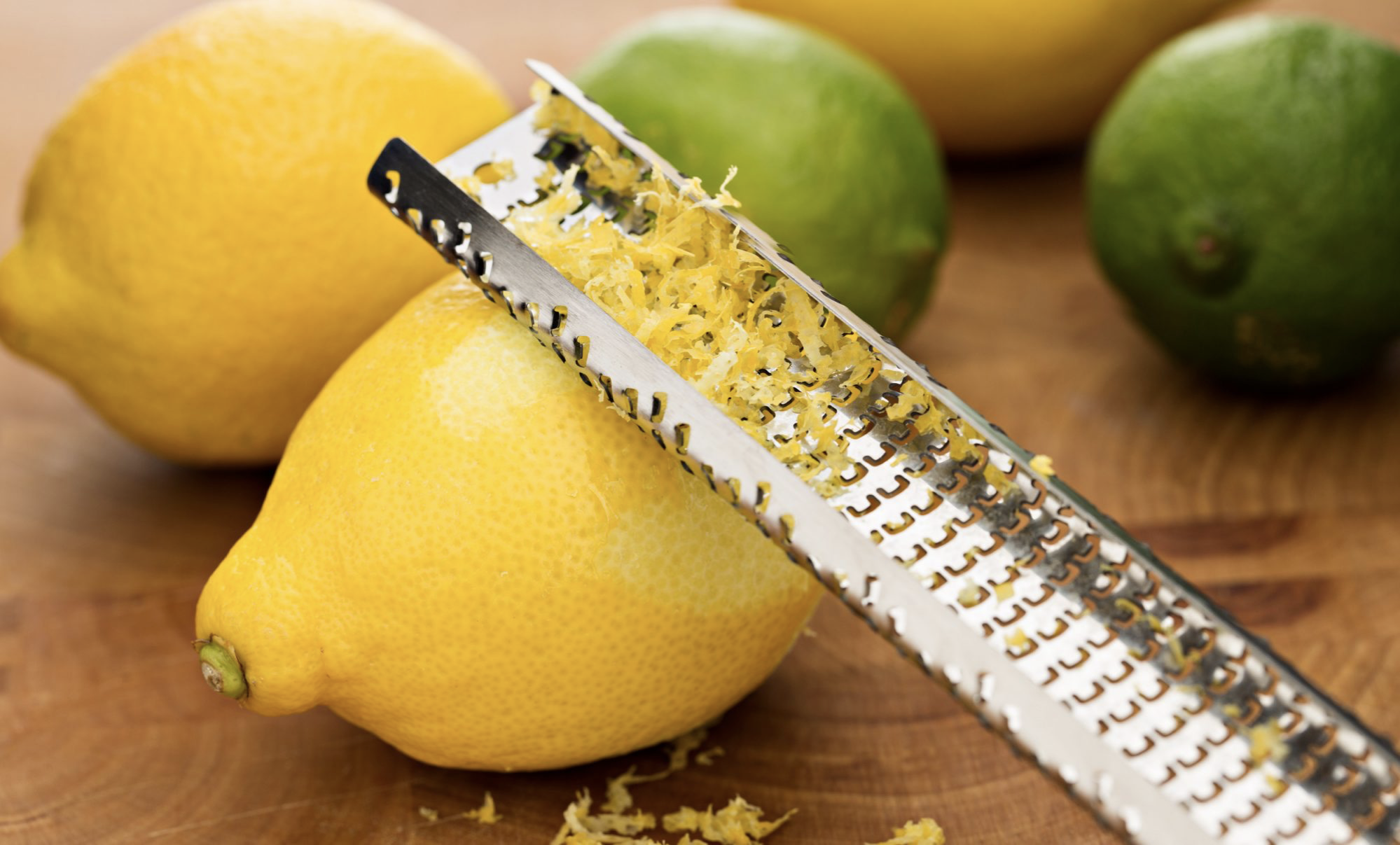
After enough personal success with her tips, I feel it’s time to pass on her know-how. She starts her tutorial with this: “Is there anything citrus zest doesn't make better? (Answer: No.) If there's one thing we've learned after countless baked goods, simple dinners, and big cooking projects at BON APPETIT, it's this: citrus zest is THE way to enhance almost any dish!”
Turns out, there are some things to know when zesting. Rochelle suggests we keep these rules in mind:
Be sure to wash and dry the fruit before using the zester. Cooks often skip the citrus rinse, because they're only using the juice. But if you plan to use the peel, you want to be sure to run the fruit under water and pat it dry first. And if not using organic citrus, then you’ll also want to rub off as much of the wax in which they’re coated, as you can.
If you’ll be using both the juice and the peel, grate your fruit first. Trust this counsel: Trying to zest 8 tiny wedges of lime is no fun.
And when grating, avoid the white pith separating the colorful zest and the fruit. It's overly bitter and doesn't have the same brightness as the actual peel.
And here’s one of my own tips: I like to zest my citrus ahead of time and freeze it in tablespoon portions. I lay these out on small pieces of plastic wrap and fold them snuggly. Then I stack these citrus squares in a small container and place this in the freezer. Or if you have them, tiny jars work great for freezer storage as well. The fruit is still perfectly usable and tasty even though the outer peel has been microplaned away.
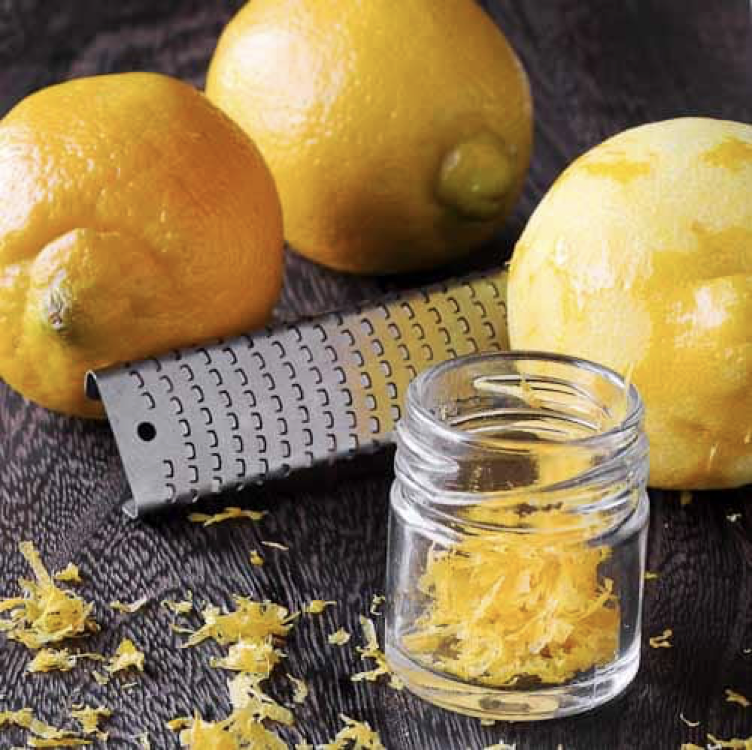
Now is a good time to stock up on lemons and limes, by the way. So, if the idea of adding more citrus zest to your dishes interests you, take a look at Rochelle’s suggestions:
ADD LEMON ZEST TO PASTA. She says the BON APPETIT cooks add it into everything from a simple seafood spaghetti sauce to a lemony chile "pesto." The key is to add it at the very last minute, so the flavors stay bright. You can even grate it right over each serving, as you would with Parmesan cheese.
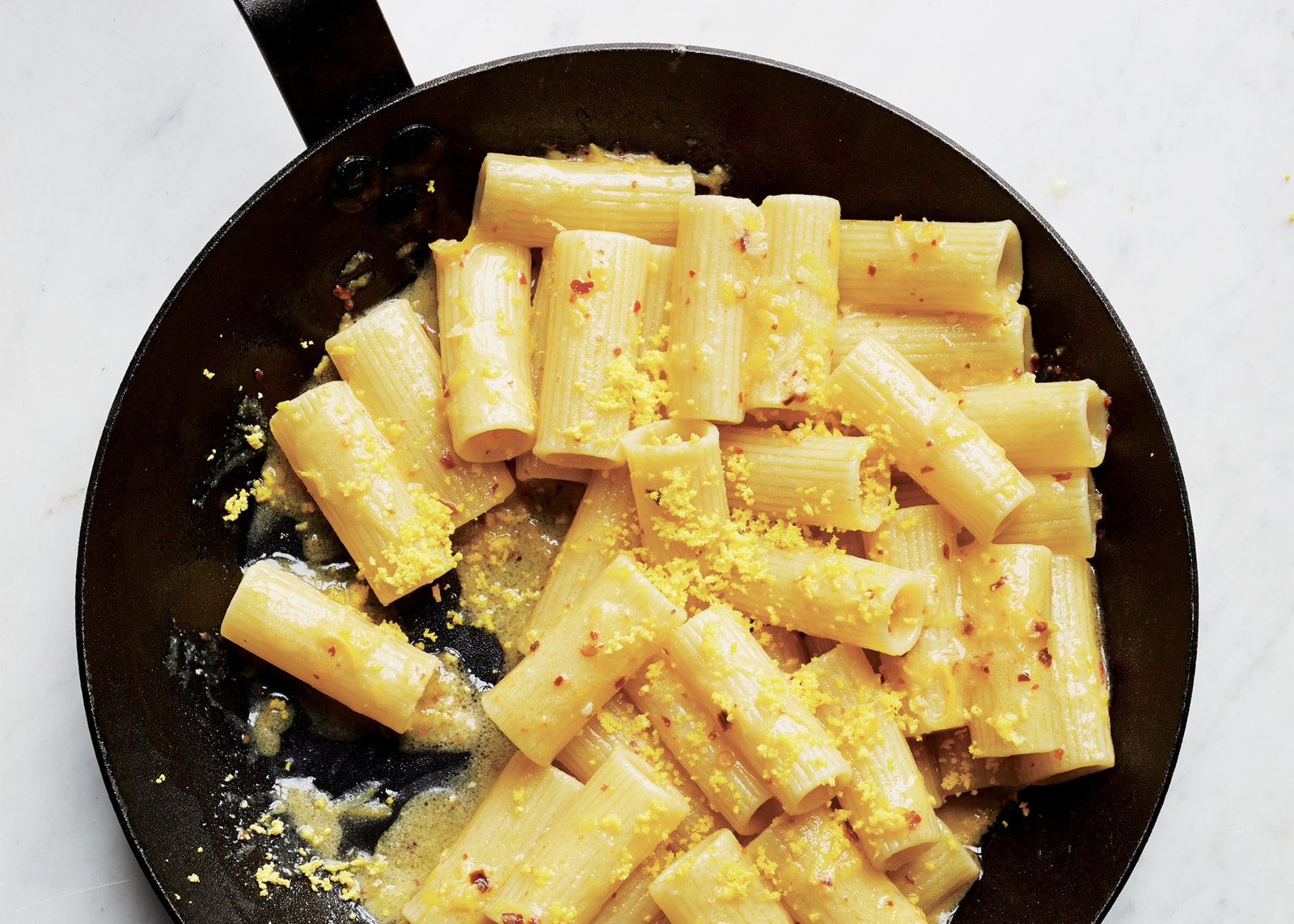
ADD IT TO BAKED GOODS. On a regular basis. A little bit goes a long way. Just like salt, a pinch or so will enhance the unique flavors already-present, or help a citrus-centric pastry, like lemon bars, really sing. For example, Key Lime Pie would taste one-note with just lime juice. It's the zest that brings it home. Even if a recipe doesn't call for zest, you can fold a tablespoon or two of lemon, lime, or orange zest into just about any sweet bread, muffin, scone, biscuit, etc.
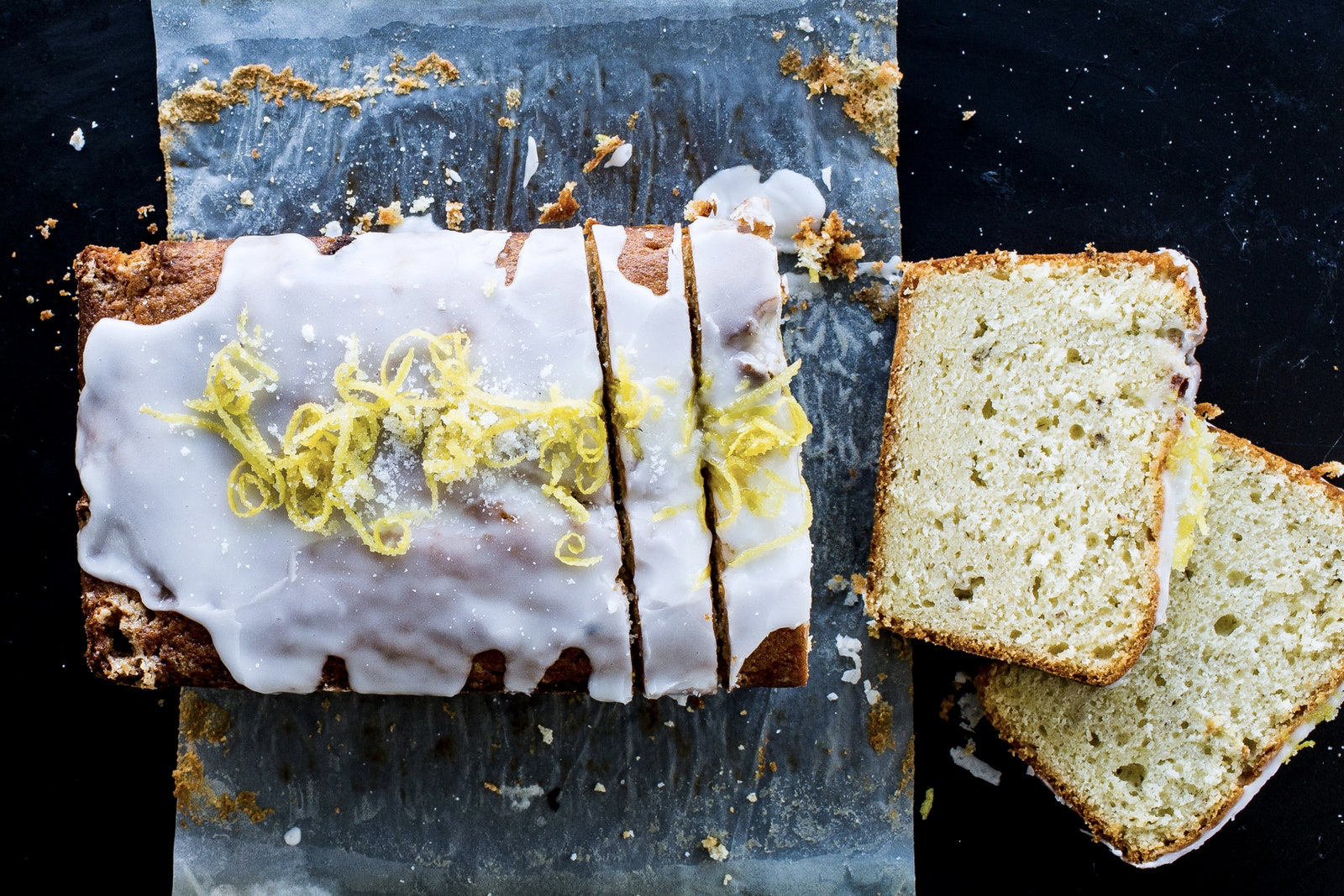
IMPROVE YOUR SAUCES. An impromptu pan sauce is a super simple way to add oomph to simple grilled meats. It doesn't take much, but it should be well-balanced. The richness of the pan drippings and the boldness of the stock and wine are balanced out by a hit of fresh citrus zest. Add it in the last few minutes of cooking so it doesn't get bitter.
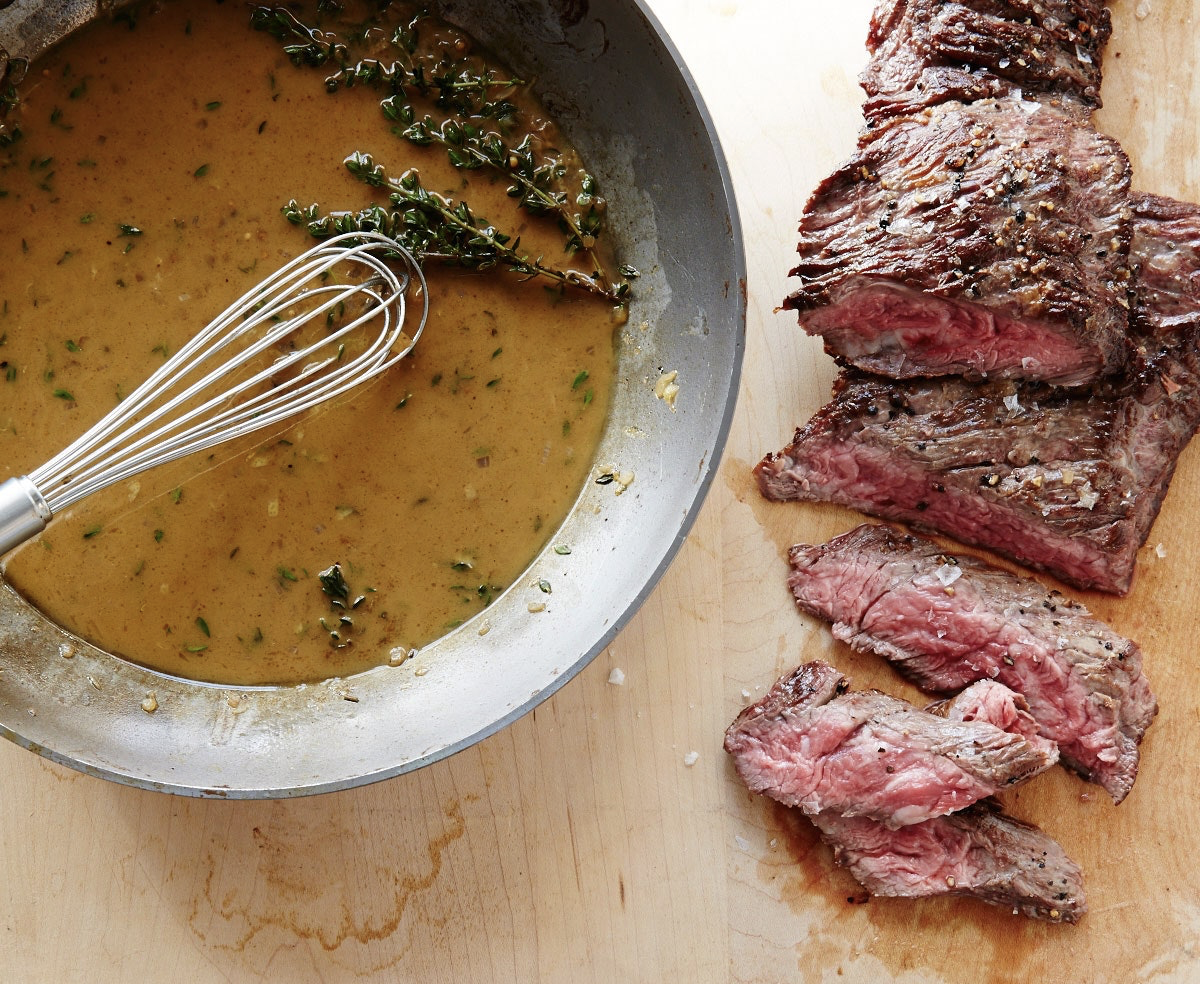
MIX A BRIGHTER VINAIGRETTE. If you're mixing up a vinaigrette at home (and it’s easy and a smart thing to do), why not take 30 extra seconds to grate some citrus zest in there? If you're using citrus zest instead of or in addition to vinegar, you are practically required. (Not to be redundant, but don't forget to zest before slicing into the fruit!)
ADD SPIZAZZ TO YOUR BREAD CRUMBS. Homemade bread crumbs are a beautiful thing—not only do they taste fresher and are chewier, you can season them yourself. BON APPETIT chefs always use a favorite combination of olive oil, a hot oven, and a shower of lemon zest. Try this recipe for Creamed Swiss Chard, as a way to test BON APPETIT’S preference for citrus-flavored bread crumbs.
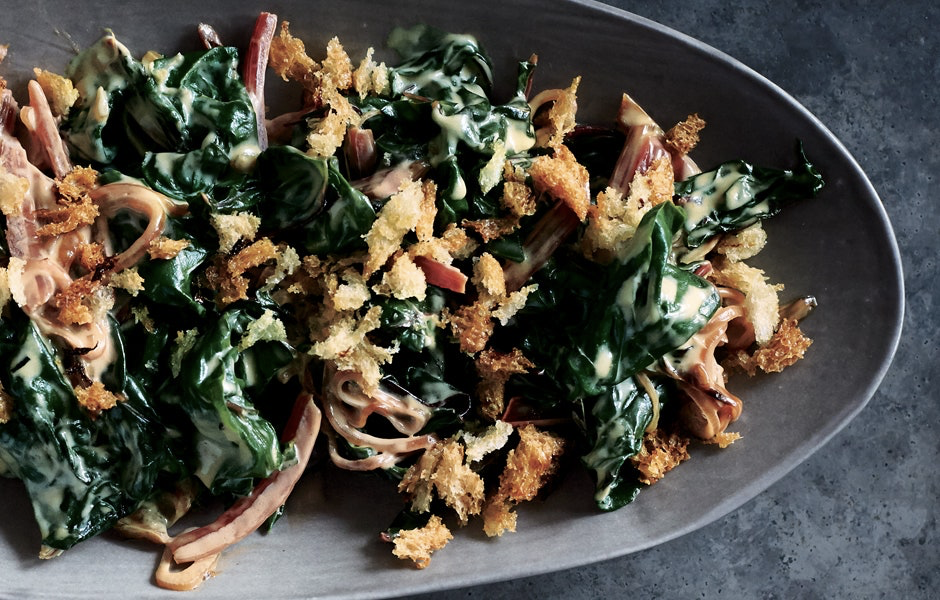
1/2 cup torn, fresh bread crumbs
2 tablespoons extra virgin olive oil
1 teaspoon finely grated lemon zest
kosher salt to taste
2 bunches (large) swiss chard ribs and stems cut into 2” lengths, leaves torn into 2” pieces
2 tablespoons unsalted butter
freshly ground black pepper to taste
3/4 cup heavy cream
Directions:
Add Recipe to Cook'n
blog comments powered by Disqus

After enough personal success with her tips, I feel it’s time to pass on her know-how. She starts her tutorial with this: “Is there anything citrus zest doesn't make better? (Answer: No.) If there's one thing we've learned after countless baked goods, simple dinners, and big cooking projects at BON APPETIT, it's this: citrus zest is THE way to enhance almost any dish!”
Turns out, there are some things to know when zesting. Rochelle suggests we keep these rules in mind:
Be sure to wash and dry the fruit before using the zester. Cooks often skip the citrus rinse, because they're only using the juice. But if you plan to use the peel, you want to be sure to run the fruit under water and pat it dry first. And if not using organic citrus, then you’ll also want to rub off as much of the wax in which they’re coated, as you can.
If you’ll be using both the juice and the peel, grate your fruit first. Trust this counsel: Trying to zest 8 tiny wedges of lime is no fun.
And when grating, avoid the white pith separating the colorful zest and the fruit. It's overly bitter and doesn't have the same brightness as the actual peel.
And here’s one of my own tips: I like to zest my citrus ahead of time and freeze it in tablespoon portions. I lay these out on small pieces of plastic wrap and fold them snuggly. Then I stack these citrus squares in a small container and place this in the freezer. Or if you have them, tiny jars work great for freezer storage as well. The fruit is still perfectly usable and tasty even though the outer peel has been microplaned away.

Now is a good time to stock up on lemons and limes, by the way. So, if the idea of adding more citrus zest to your dishes interests you, take a look at Rochelle’s suggestions:
ADD LEMON ZEST TO PASTA. She says the BON APPETIT cooks add it into everything from a simple seafood spaghetti sauce to a lemony chile "pesto." The key is to add it at the very last minute, so the flavors stay bright. You can even grate it right over each serving, as you would with Parmesan cheese.

ADD IT TO BAKED GOODS. On a regular basis. A little bit goes a long way. Just like salt, a pinch or so will enhance the unique flavors already-present, or help a citrus-centric pastry, like lemon bars, really sing. For example, Key Lime Pie would taste one-note with just lime juice. It's the zest that brings it home. Even if a recipe doesn't call for zest, you can fold a tablespoon or two of lemon, lime, or orange zest into just about any sweet bread, muffin, scone, biscuit, etc.

IMPROVE YOUR SAUCES. An impromptu pan sauce is a super simple way to add oomph to simple grilled meats. It doesn't take much, but it should be well-balanced. The richness of the pan drippings and the boldness of the stock and wine are balanced out by a hit of fresh citrus zest. Add it in the last few minutes of cooking so it doesn't get bitter.

MIX A BRIGHTER VINAIGRETTE. If you're mixing up a vinaigrette at home (and it’s easy and a smart thing to do), why not take 30 extra seconds to grate some citrus zest in there? If you're using citrus zest instead of or in addition to vinegar, you are practically required. (Not to be redundant, but don't forget to zest before slicing into the fruit!)
ADD SPIZAZZ TO YOUR BREAD CRUMBS. Homemade bread crumbs are a beautiful thing—not only do they taste fresher and are chewier, you can season them yourself. BON APPETIT chefs always use a favorite combination of olive oil, a hot oven, and a shower of lemon zest. Try this recipe for Creamed Swiss Chard, as a way to test BON APPETIT’S preference for citrus-flavored bread crumbs.

Creamed Swiss Chard
Serving size: 4
Calories per serving: 343
Ingredients:
Calories per serving: 343
1/2 cup torn, fresh bread crumbs
2 tablespoons extra virgin olive oil
1 teaspoon finely grated lemon zest
kosher salt to taste
2 bunches (large) swiss chard ribs and stems cut into 2” lengths, leaves torn into 2” pieces
2 tablespoons unsalted butter
freshly ground black pepper to taste
3/4 cup heavy cream
Directions:
1. Preheat oven to 400°. Toss breadcrumbs, oil, and lemon zest on a rimmed baking sheet; season with salt. Toast, tossing once, until golden brown, 8–10 minutes.
2. Meanwhile, cook chard leaves in a large pot of boiling salted water until tender, about 1 minute. Drain; transfer to a bowl of ice water to cool. Drain and squeeze well in a clean kitchen towel to remove excess moisture.
3. Heat butter in a large saucepan over medium heat. Add shallots and chard ribs and stems, season with salt and pepper, and cook, stirring often, until tender, 5–8 minutes. Add cream; bring to a boil, reduce heat, and simmer, stirring often, until thickened, about 4 minutes. Add chard leaves and cook, stirring, until warmed through and coated with cream sauce; season with salt and pepper.
4. Top Swiss chard with breadcrumbs just before serving.
2. Meanwhile, cook chard leaves in a large pot of boiling salted water until tender, about 1 minute. Drain; transfer to a bowl of ice water to cool. Drain and squeeze well in a clean kitchen towel to remove excess moisture.
3. Heat butter in a large saucepan over medium heat. Add shallots and chard ribs and stems, season with salt and pepper, and cook, stirring often, until tender, 5–8 minutes. Add cream; bring to a boil, reduce heat, and simmer, stirring often, until thickened, about 4 minutes. Add chard leaves and cook, stirring, until warmed through and coated with cream sauce; season with salt and pepper.
4. Top Swiss chard with breadcrumbs just before serving.
Recipe formatted with the Cook'n Recipe Software from DVO Enterprises.
Sources:
- www.myrecipes.com
- www.wikihow.com
- www.whatsinthepan.com
- www.bonappetit.com
 Alice Osborne
Alice Osborne
Weekly Newsletter Contributor since 2006
Email the author! alice@dvo.com
